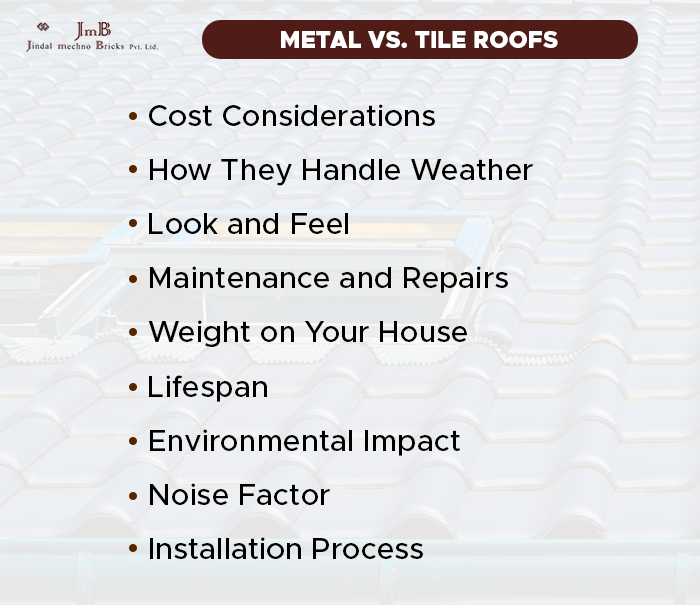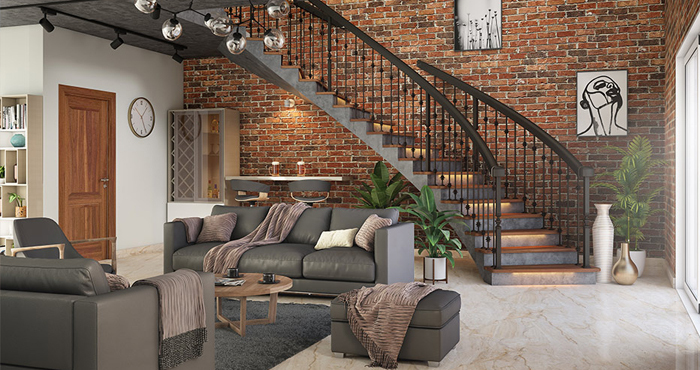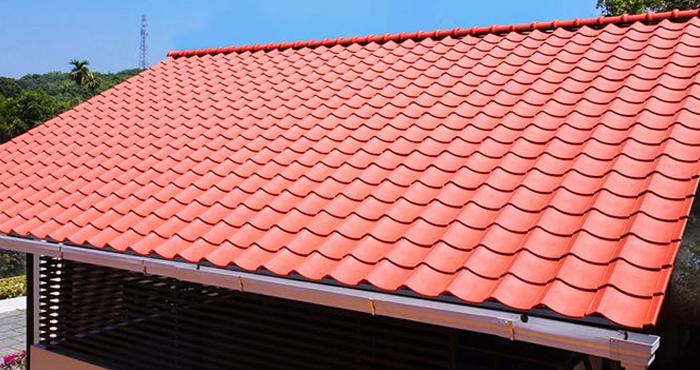The roof is more than just a protective shield over your head; it is a crucial element that defines the durability, aesthetics, and value of your home. And when it comes to building or renovating a home, one of the most critical decisions you will make is choosing the right roof. The roof you choose impacts everything from your home’s overall appeal to its resilience in facing weather challenges. Understanding the attributes of metal vs. tile roofing is essential for making an informed choice. Both materials offer unique benefits and drawbacks, and what works best for one home may not be ideal for another. This guide is designed to provide you with the insights you need to choose a roof that not only looks good but also provides the protection and efficiency your home deserves.
Metal Roofing
Metal roofs, known for their durability and modern appeal, have become increasingly popular. They offer a range of benefits:
- Longevity and Durability: Metal roofs can last up to 50 years or more with minimal maintenance, effectively resisting weather elements like wind, hail, and snow.
- Energy Efficiency: Metal roofs reflect sunlight, helping reduce cooling costs in the summer.
- Variety and Style: Available in multiple colours and styles, they can fit various architectural designs.
- Eco-Friendly: Most metal roofing materials are recyclable at the end of their lifespan.
Tile Roofing
Tile roofs, whether clay, concrete, or slate, have a classic appeal that many homeowners love. They come with their own set of advantages:
- Aesthetic Appeal: Tile roofs have a traditional and elegant look, available in various colours and styles, including clay roof tiles and pavers tiles.
- Durability: Tiles are extremely durable, often lasting more than 50 years. They are resistant to rot, pest damage, and fire.
- Thermal Properties: Tile roofs offer excellent insulation, keeping homes cooler in summer and warmer in winter.
- Environmentally Friendly: Made from natural materials, tile roofs are environmentally sustainable and recyclable.

Metal vs. Tile Roofs
When you are deciding between metal vs. tile roofs, it is important to understand how they stack up against each other in various aspects:
Cost Considerations: Metal roofs might hit your wallet harder at first compared to tile roofs. They are often more expensive to buy and install. However, they can be a smarter investment in the long run due to their longer lifespan and lower maintenance needs.
How They Handle Weather: Metal roofs are champions in snowy areas. Snow slides right off them, preventing heavy build-up. Tile roofs, on the other hand, are great in hot as well as winter climates. Their insulation properties keep your home cooler in the summer and warm in the winter.
Look and Feel: If you are looking for a modern, sleek look, metal roofs are the best. They come in various colours and finishes, fitting contemporary home designs. Tile roofs give a classic, elegant vibe and are perfect for traditional or Mediterranean-style homes.
Maintenance and Repairs: Metal roofs are low maintenance. They don’t need much care and can withstand a lot without damage. Tiles, while robust, can crack or break and might need more attention over time to ensure they stay in good shape.
Weight on Your House: Tiles are heavy. Your house needs to be sturdy enough to hold them. This is something to think about, especially if you are replacing an old roof. Metal roofs are much lighter and usually don’t need extra support.
Lifespan: Both metal and tile roofs can last for decades. Metal roofs can go for 40-70 years, while tile roofs can last over 50 years. The longevity of your roof depends on the material quality and how well you maintain it.
Environmental Impact: If environmental factors are important to you, both options have benefits. Metal roofs are often made from recycled materials and can be recycled after their life is over. Tiles are made from natural materials like clay, making them eco-friendly, and they can also be recycled.
Noise Factor: One thing to consider with metal roofs is noise. They can be noisier during rain or hail compared to tile roofs. However, proper insulation can reduce this noise.
Installation Process: Installing a metal roof can be quicker and less complex than installing a tile roof. Tiles are heavier and more fragile, requiring careful handling and sometimes more time to install.
Conclusion
While both metal and tile roofs have their merits, tile roofs stand out for their unparalleled aesthetic appeal, durability, and environmental friendliness. For those who prioritize these factors, tile roofs are the clear choice. This is where Jindal Mechno Bricks, with its reputation as one of the leading brick manufacturers, steps in. Offering the best quality roof tiles, including clay roof tiles and pavers tiles, Jindal Mechno Bricks ensures that each product not only meets but exceeds industry standards. Our tiles are crafted to perfection, ensuring they bring both beauty and resilience to your home.
Whether you are constructing a new home or renovating an existing one, Jindal Mechno Bricks provides roofing solutions that combine the timeless elegance of tile roofs with the assurance of durability and quality. Choose Jindal Mechno Bricks for a roof that not only protects your home but also enhances its overall aesthetic and value.
FAQs
Q. How Long Do Metal and Tile Roofs Last?
Ans. Metal roofs can last up to 70 years, and tile roofs can last over 50 years. Taking good care of them can make them last even longer.
Q. Do Metal Roofs Make More Noise in Rain and Hail?
Ans. Yes, metal roofs can be louder during rain or hail. But, if you install them with good insulation, they can be much quieter.
Q. Are These Roofs Good for Extreme Weather?
Ans. Metal roofs are great for places with lots of snow since snow slides off them easily. Tile roofs are excellent in hot places because they keep your house cooler.
Q. Which Costs More, Metal or Tile Roofs?
Ans. Metal roofs usually cost more at first than tile roofs. But they often end up being cheaper over time because they don’t need as much care or repair. Tile roofs might need more maintenance as they get older.





